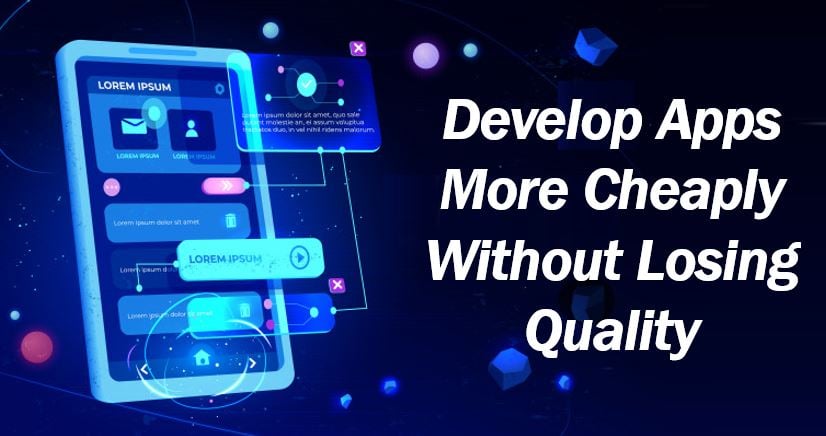Many companies develop apps as a core product, or to complement their existing products and services. Either way, their success is contingent upon the usability, effectiveness, and overall value of the app.

The problem is, even if you have a great idea, app development can be prohibitive. It’s time consuming, expensive, and you don’t always get what you pay for. If you throw money at the problem, you could end up exhausting your budget prematurely. But if you cut costs too drastically, you’ll end up with an inferior quality product that won’t have the power to improve your business.
Fortunately, there are some strategies that can help you save money on app development without sacrificing the quality of your app.
Rely on Nearshoring
First, rely on a nearshoring development company. To understand the value and premise of nearshoring, you have to understand the perks and drawbacks of offshoring.
Hiring a developer in the United States is expensive, sometimes prohibitively so. That’s why many people turn to development teams in developing areas like China or India. Developers here can build good products for a much, much lower price. However, there are some problematic complications. For example, you’ll have to deal with a team in a completely different time zone, you’ll suffer slowdowns and miscommunications from language gaps, and you might encounter some serious cultural differences.
Nearshoring attempts to preserve the benefits of offshoring (i.e., lower costs) while minimizing the disadvantages. With teams in Central American and South American countries, nearshoring development partners offer similar time zones, languages, and cultures—so you can develop for less without sacrificing the quality of your work or finished app.
Focus on Launching a Minimum Viable Product
Next, focus on launching a minimum viable product (MVP). An MVP is a version of your app with the least number of features that will still interest and satisfy your early customers. In other words, instead of building out your dream app from start to finish, you’ll come up with a complete, yet minimalistic first draft for the initial launch.
This is going to help you in several ways.
- First, you’ll need to spend less time (and therefore less money) developing the app.
- Second, you’ll be able to start generating revenue with the app sooner, eventually offsetting the costs of further development.
- Third, launching early allows you to get feedback from real users at an earlier stage in the process.
With that extra feedback, you’ll be able to shape the app in ways most likely to please your eventual user base. Otherwise, you might metaphorically paint yourself into a corner; if you build the app completely and realize it has a fatal flaw, your entire development budget could be a waste.
This doesn’t mean sacrificing the value or quality of the app—just its initial size and complexity.
Use Agile Development Methodologies
It’s also a good idea to use agile development methodologies. Agile development prioritizes development speed and adaptability; rather than charting out a firm plan for the app from the outset and developing it all at once, you and your development team will collaborate throughout the development process. You’ll work together on the core idea of the app, give and receive feedback as it begins to come to fruition, and reshape your vision for the app on an ongoing basis.
The biggest cost advantage here is reducing wasted time. You’ll end up producing a finished product faster, and you’ll spare yourself the possibility of having to undo massive mistakes—or having to rebuild the app entirely.
Build a Hybrid App
At some point, you’ll have to decide whether you want to develop your app natively for iOS, natively for Android, or natively for both. There’s also another option; build a hybrid app that can function equally well on both platforms.
The absolute cheapest approach is to build a native app for a single platform, but that’s going to limit your potential reach. Instead, building a hybrid app can be 30 to 40 percent less expensive than developing a native app for each platform separately.
As you might imagine, there are some pros and cons to developing a hybrid mobile app; you’ll get ample reach and you’ll spend less time and money to get there, but the app probably won’t function as well as it would if it were developed as two separate native apps. Still, hybrid apps are often the best choice for the budget-conscious developer.
Developing your first mobile app is going to be a challenge no matter what your priorities are. But if you’re looking to develop a high-quality app while also saving money on development costs, there’s a viable path forward for you. Follow these strategies to preserve your budget without compromising the utility of your finished product.
Interesting related article: “What is an App (Application)?”

